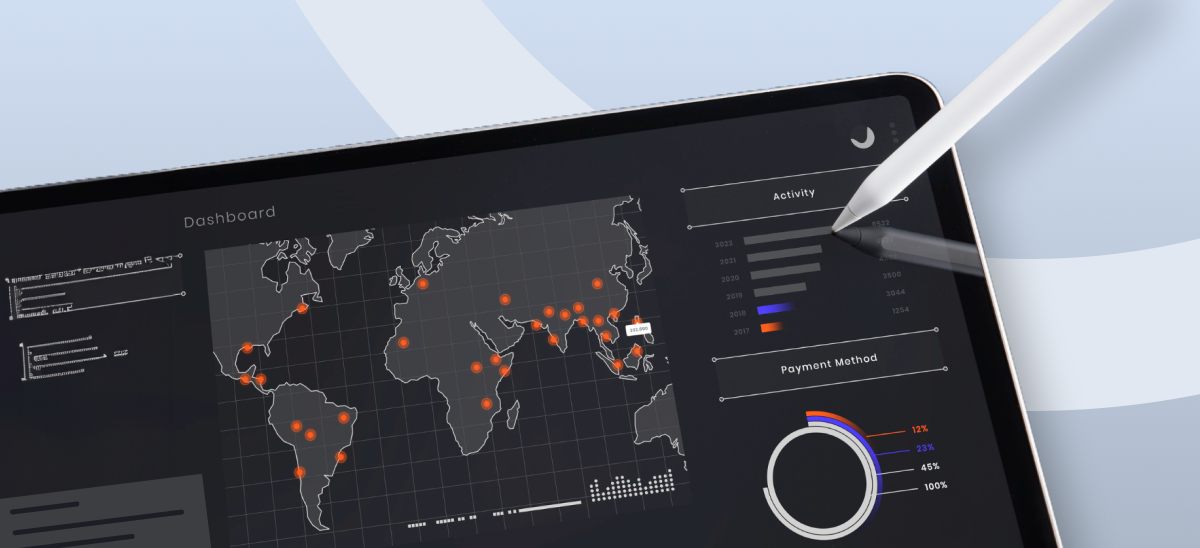Organisations take advantage of advanced analytics using the techniques given below:
Data Mining
Data mining is extracting useful information from large, raw chunks of data to find trends, plan new business strategies, increase revenue, decrease costs, reduce risks and enhance customer relationships. It establishes relationships and finds patterns and correlations to detect dangers and frauds and to make a profit out of businesses.
The data mining process constitutes many steps like the following:
- Identifying the data needed for the company’s purposes*
- Preparing and assembling data to find remedies,
- Evaluating data models
- Deploying the results to make the right decisions
Sentiment Analysis (Opinion Mining)
Sentimental Analysis technique is used by businesses to detect emotion or feelings in textual data. It categorises the tone of writing as positive, negative or neutral. Organisations are benefitted in many ways by aiding in crisis prevention and understanding and analysing customers’ opinions about their particular products or services. The companies monitor online conversations to learn about the customers’ tastes, needs, and expectations.
Sentiment analysis’ fully automated tools assist businesses in extracting information from unstructured and unorganised material found on the internet, such as blog posts, email, webchats, social media channels, and comments.
Cluster Analysis
It’s a popular data-mining technique that matches unstructured data fragments based on commonalities discovered between them. Cluster analysis is instrumental for companies to identify different consumer groups and sales transactions or detect fraud. It is used in Machine Learning, image analysis, pattern recognition, information retrieval, data compression, bioinformatics and computer graphics.
Cluster analysis is a powerful data-mining tool for any company that wants to recognise discrete groupings of consumers, sales transactions, or other types of behaviours and things. Insurance firms use cluster analysis to identify fraudulent claims, and banks use it for credit scoring.
Retention Analysis
Studying user analytics to determine how and why consumers churn is known as retention analysis (or survival analysis). Retention analysis is crucial for learning how to keep a lucrative client base by increasing retention and new user acquisition.
You’ll learn the following things if you do a retention analysis regularly:
- Why are customers leaving?
- When clients are more prone to abandon a purchase.
- The impact of churn on your bottom line.
- How to make your retention strategies more effective.
Customer retention is a crucial practice in every business; companies can quickly decrease churn rates and increase customer satisfaction by tracking and taking advantage of customer behaviour.
Complex Event Analysis
Complex data analytics is the application of complex algorithmic approaches to effectively process huge unstructured data volumes. Computers perform data analysis; this was done mainly by individual machines acting on well-defined data structures in the past. This method uses technology to forecast high-level occurrences that are likely to occur due to a series of low-level factors.
This technique is often employed in the following scenarios:
- Stock market trading: To recognise the stock price, compare it to a pattern, and prompt the proper buying/ selling response.
- Predictive maintenance: Used by manufacturing facilities to collect data regularly to see any trends and signal the need to shut down equipment for predictive maintenance.
- Real-time marketing: This allows marketers to spot trends in consumer behaviour, giving personalised offers to customers in real-time.
- Operation of autonomous cars: It determines when to perform specific actions like spotting a stop sign in the distance, calculating the space, and selecting a deceleration rate to assure complete stopping at the movement.
Predictive Analysis
Predictive analysis is a technique used to analyse data and forecast the possibility of an event occurring in the future, allowing businesses to plan. It uses historical data combined with statistical modelling, data mining techniques and Machine Learning to predict risks and opportunities. Predictive analysis uses a scientific approach to forecast the future with a high degree of accuracy.
Predictive analytics improves corporate performance in a variety of ways:
- Optimisation of marketing campaigns: Useful in forecasting consumer reactions to changes in product offerings and in assisting a company in determining the best ways to attract and retain customers.
- Streamlined operations: It helps to manage resources as needed, such as storing inventory to keep storage expenses low or recruiting additional temporary personnel during peak times to save money on HR. This aids in streamlining the company’s operations, resulting in increased efficiency and lower expenses.
- Enhanced cybersecurity: Assist to discover anomalies and patterns in real-time, allowing fraud or other persistent threats to be identified and addressed.
- Reduced risk: It helps to examine and predict whether your buyer will pay you on time. Predictive analysis can be performed using a prediction algorithm to calculate the buyer’s credit score based on creditworthiness.
Machine Learning
Machine Learning is a crucial part of the AI subset of advanced analytics. This advanced analytic tool uses computational approaches to find patterns in data. It then uses them to build statistical models that can produce solid results without human participation. It falls into the following categories:
Supervised learning: The more common type of Machine Learning is supervised learning, which uses labelled data sets to allow you to search for specific patterns in the data. It requires vast datasets for the process; the more the amount of data, the more chances of getting accurate results.
Unsupervised learning: It employs various methods to find patterns and correlations in a subset of data. On the other hand, these algorithms are unable to recognise specific data sets, but they sort the information based on similarities and anomalies. However, it is applied in cybersecurity to find patterns from data.
Semi-supervised learning: It combines the benefits of supervised and unsupervised learning approaches. This technique uses unlabelled and labelled data to help the systems understand the challenge. The labelled data set is then utilised to aid in the model’s training, with the results being used to mark the remaining unlabelled data. When all of the data has been labelled, the model is trained on it.
Reinforced learning: A relatively new advancement in Machine Learning, a reinforcement learning algorithm learns and develops to achieve a specific goal through trial and error. It tries out numerous choices before using rewards or penalties to help it make the best decision to achieve the goal.
Data Visualisation
Data representation in a visual or graphical style is known as data visualisation. It allows decision-makers to see analytics visually, making it easier to grasp complex topics or spot new patterns. Data visualisation aids in telling tales by transforming data into a more understandable format and showing trends and observations. A good visualisation tells a story by reducing noise from data and emphasising the essential facts. The common types of data visualisation include charts, tables, graphs, maps, infographics and dashboards.
It helps the businesses in the following ways:
- To determine which areas require attention or improvement.
- To determine which elements have an impact on customer behaviour.
- Assist in deciding which products to place where.
- Help to estimate sales volume.
Cohort analysis
Cohort analysis is employed to analyse the data and group it based on shared user behaviours during a specific period. It is a beneficial technique for boosting customer retention and happiness. By analysing behavioural patterns, it is possible to gain valuable information about what type of campaign is most likely to be successful, which customer group is most likely to buy your goods, and their expectations from a product. Cohort analysis can bring several advantages to a company:
Increased Customer Lifetime Value (CLV): Cohort analysis’ capacity to assist a firm in improving client retention improves the CLV, which is the total money a business generates from a customer throughout their relationship.
Stronger relationships with loyal customers: Cohort analysis helps you discover your most loyal customers, allowing you to target them more precisely and encourage them to stay with you for as long as possible.
Better testing of new designs: In most cases, tests cannot predict how well a new design of a product will perform in the market. With the aid of cohort analysis, generate a cohort based on interactions with the latest design and compare it to the conversion rate of those that haven’t.
Regression Analysis:
It is a powerful statistical method used to estimate the link between dependent (outcome) and independent (features) variables. The goal of regression analysis is to figure out how one or more factors may influence the dependent variable to spot trends and patterns. It is crucial for projecting future trends and generating forecasts.
To perform a regression analysis, you must first establish a dependent variable that you believe is influenced by one or more independent factors. After that, you’ll need to create a comprehensive dataset to work with. Using surveys to get data from your target consumers is a great way to get started. All of the independent variables you are interested in should be addressed in your survey.
Different sectors like banking, insurance, retail, pharmacy, e-commerce and others used regression techniques to yield valuable, actionable business insights.
Advanced Analytics gives companies a greater understanding of data patterns and behaviour, allowing them to forecast future actions. It provides a substantial strategic advantage by revealing new business prospects and potential innovations, a deep awareness of customer and employee behaviours, fresh ways of looking at existing problems, and operational improvement opportunities, increasing revenue or lowering costs.Advanced Analytics analyses information from various data sources using predictive modelling, Machine Learning, and business process automation.




